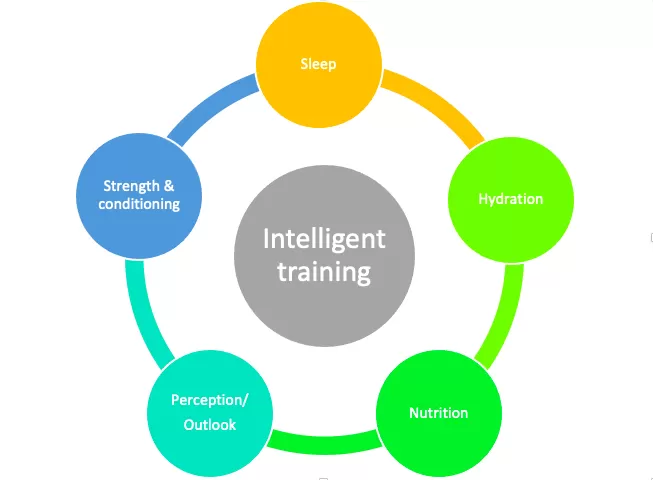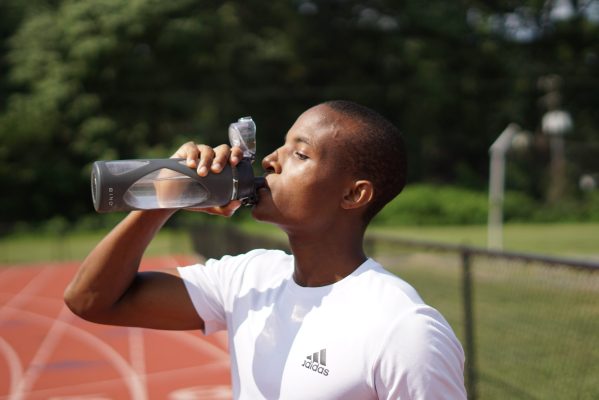Yes, that’s right, this is yet another blog on how to recover from exercise however, it might not be quite what you think…
Firstly, a recap on training and the process of training. Training causes a ‘stress’ on the system as a whole, and possibly specific stress on subsystems (a subsystem could be a muscle or a group of muscles) and, according to the general adaptation syndrome, this constant stress or stimuli which alters the system’s internal homeostasis (homeostasis is a feedback loop to maintain balance within the subsystems). Appreciating and understanding the training process can help to direct some desired development within a subsystem, for example, place more emphasis on running (running being the stress) (medium to long distances) and you will notice an improvement in the cardiorespiratory function, conversely, repeatedly lift some weights (the load and exercise being the stress) and you will notice a change in both skill/technique, which may also feel like you’re becoming stronger. However, regardless of the mode of training, as the training/stress is altering the homeostasis of the subsystems, this will ultimately lead to a state of fatigue.
The human body is constantly attempting to regulate homeostasis via feedback mechanisms of the bodily subsystems, and as such, training consistently and intelligently along with other lifestyle factors, the systems will attempt to adapt to stressors which are placed upon it, this, in a nutshell, is the SAID principle; Specific Adaptations to Imposed Demands. This constant exposure or presentation of a new stress or stimuli will change the subsystem’s, and whole system’s homeostasis, which could be inferred as being healthier, fitter and more robust. However, if we train or play repeatedly without sufficient recovery between bouts, we can fall into a state of chronic fatigue, which is an accumulation of stressors, often represented as overtraining, which unsurprisingly can negatively affect the body’s ability to recover back to a homeostasis, thus the body is deemed as ‘stressed’. The symptoms of overtraining are well documented in the literature, such as, chronic tiredness, muscle and joint aches, frustration and mood change, lack of appetite, lack of development and progress. Unfortunately, the state of overtraining is sometimes overlooked, especially in young athletes, as exercise, sport, training, and other physical activities are constantly pushed onto young people, with the notion of the more activity, sport and training has to be better! Note – especially with a ‘eat junk food and other processed food and then go and burn it off’ mentality. Stressor + Stressor = more stress!
Overtraining is rife in a youth athlete population, especially with talented individuals, as they are asked to play for their club, school and academy, attending training for each, whilst possibly playing additional sport. Not to mention other commitments such as school, social and family time. I’ve lost count of the times I’ve heard that a young athlete hasn’t got time to eat/sleep/train properly around their busy sporting schedule? Many young athletes simply do not place enough importance on recovery protocols meaning that they will often perform in a fatigued state or even worse a chronic fatigued state, which will have a detrimental effect on their development and possibly increasing the risk of injury, burnout, frustration and a negative perception of their sport. Furthermore, they will then often look for shortcuts to try and help aid recovery such as expensive clothing (one company have recently started selling clothing that is infused with a fibre that purportedly reflects your body heat back to you, penetrating your skin to increase “tissue oxygenation”), sports drinks, protein shakes and self-massage tools.
As I mentioned earlier, after training our body is doing its upmost to recover with an attempt to regulate homeostasis. Our job is to help facilitate that.
Take Brian, a 44-year-old recreational cyclist who feels that his recovery will be enhanced by spending nearly £100 on compression tights. Now this may provide your high-level cyclist with a 0.5% improvement on their recovery (which could make a difference in elite sport which can be decided on tiny margins) however, Brian is 15kg overweight, drinks alcohol, eats poor-quality food most nights and also has a stressful job. Will these compression tights make the difference for Brian? Or would a change of Brian’s lifestyle such as less alcohol, better sleep or higher quality food be more beneficial? Ultimately, Brian is simply cutting corners.
I get that Brian just wants to enjoy his sport and isn’t participating at a high level, but my point is this; recovery is part of the training cycle, and intelligent training. It would be a better return on investment if Brain spent the money on high quality food, increase his hydration, which will indirectly help with sleep patterns and circadian rhythms. By training, eating, drinking, and sleeping well, this will allow the system/subsystems to regenerate and possibly find a new homeostasis.

The above diagram demonstrates the intelligent training cycle, notice how it doesn’t mention recovery directly? This is because recovery is a by-product or a consequence of sleeping, hydration, eating and even thinking, aka living like an athlete. Each part of the training cycle is as important as the next. Table 1 clearly illustrates key points that can be actioned building and creating an intelligent training cycle. Learning to live like an athlete, which support long-term development and allow you to eventually perform and to excel in the sport which you love.
| Sleep | Get to bed before 11pm. It’s not how many hours you sleep, but the quality of your sleep. Leave laptops and phones out of the bedroom |
| Hydration | Drink clean fresh water. Reduce soda pop, high sugar or energy drinks. |
| Nutrition | See past blogs on eating like an athlete |
| Perception/outlook | Start a training diary. Consider your time for the day and set priorities – what is important for you. If unsure, speak with your coach as they can help with guidance |
| Strength & Conditioning | Athlete-centred training – created by an Advance Lab coach, who will consider training volume, load, and modes of training |





